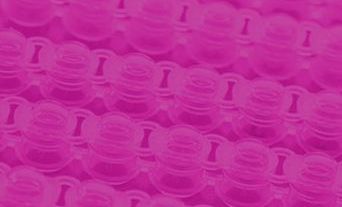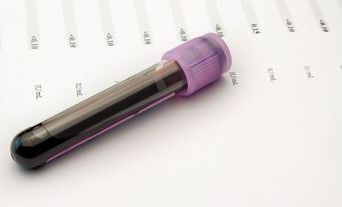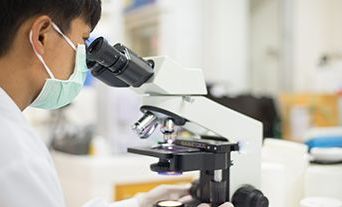Here, David Turner and Ann-Margaret Little highlight the key achievements and advances in this specialty, as well as future challenges around optimising donor matching and digital pathology.
Background to the specialty
In common with all pathology specialisms, histocompatibility and immunogenetics (H&I) developed as a clinical discipline after many years of research. Pioneers of transplant immunology – legendary names in the discipline, such as Peter Medawar, Peter Gorer and George Snell – studied allograft rejection in animal models. They identified the central role of the immune response in the rejection process and the importance of polymorphic proteins encoded in a region of the genome designated the major histocompatibility complex (MHC). Others, such as Jean Dausset, Rose Payne and Jon van Rood, studied the phenomenon of leukocyte agglutination when using sera from multi-transfused patients or multiparous women. The targets of the antibodies identified were shown to be human MHC molecules, eventually named human leukocyte antigens (HLA). These various strands of research coalesced into the nascent discipline of ‘tissue typing’, which was able to support the new solid organ and haematopoietic stem cell transplant programmes starting in many countries from the 1960s onwards.
Over the last 50 years, many advances have been made in the field of H&I; the elucidation of new HLA genes and alleles, the development of assays for HLA typing and HLA antibody definition, and the approaches necessary for risk assessment at the time of transplant.
H&I labs are now involved in supporting many forms of solid organ and haematopoietic stem cell transplant as well as diagnostic testing (as many HLA alleles are associated with auto-immune diseases or drug hypersensitivities) and aspects of transfusion medicine. There are 23 H&I labs around the UK providing clinical HLA and human platelet antigen (HPA) and human neutrophil antigen (HNA) testing. They are staffed by biomedical scientists and clinical scientists, with a requirement for the laboratory head to be a Fellow of the Royal College of Pathologists.
H&I has been a separate discipline within the College for many years, thanks to the efforts of the scientists who led H&I labs in the earlier days of the discipline, such as Professor Phil Dyer and Professor Derek Middleton. They, and many others, pushed for H&I to be seen as a standalone discipline with its own SAC and Part I and II exams. These efforts have led to structured training for staff working in H&I in the UK, which ensures continuity of support to service users as H&I continues to develop as a clinical science.
H&I labs are now involved in supporting many forms of solid organ and haematopoieticstem cell transplant as well as diagnostic testing...
Establishing H&I as a College specialty
A recollection from Professor Derek Middleton PhD, FRCPath
"It was a struggle for H&I to gain recognition. At the time, it was a big bonus to be able to gain member-ship by research publications and I may even have been the first. Heather Dick, who was head of the lab in Glasgow, helped me a lot. It was not just a case of listing your publications. You needed to tell the story around them – how important the publications were, if they led to improvements in the lab, how they showed you could be head of the lab. It was easier for me because all my publications had been when I was in essence running the Belfast lab. There were several others who gained membership this way, including Bob Vaughan from Guy’s and David Savage in Belfast.
However, when we first found out that 20% of College membership in those days were scientists (mainly biochemists), it was then I realised there was a home for us at the College. The difficulty in gaining membership via immunology as a scientist at that time though meant that we needed our own discipline."
A recollection from Professor Philip Dyer, OBE, PhD, FRCPath
"In the late 1980s, a scandal involving non-consensual removal of kidneys for transplantation from living donors precipitated the Human Organ Transplants Act and its Regulations. Enshrined in the Regulations was the need for a genetic relationship to be established using techniques which existed only in H&I laboratories. The British Society for Histocompatibility and Immunogenetics (BSHI) had advised on these Regulations and had concurrently drafted a training programme covering these and other techniques in use to support clinical organ, tissue and cell transplantation.
Several medical college members who had an interest in H&I, including Heather Dick, Rodney Harris and Richard Batchelor, were required by the College President, Peter Lachmann, to harmonise these developments within the College. Derek Middleton and I, who were at the time aspiring to become College members, were asked to join this initiative. The outcome was the establishment of the College H&I Sub-Committee, which was to report to both the College Immunology and Haematology Committees reflecting the cross-disciplinary nature of H&I. Richard Batchelor was appointed as the first Chairman and both myself and Derek Middleton were appointed to the Sub-Committee. We both gained College membership via the publications route. This Sub-Committee moved to establish a route to College member-ship by examination in H&I. The vast majority of candidates have been non-medical NHS scientists, which reflects the staffing structure within the discipline."
Key achievements
Lymphocytotoxicity
One of the seminal developments in the field of routine transplant immunology was the development, by Paul Terasaki and colleagues, of the lymphocyte microcytotoxicity test, utilised for HLA typing, antibody definition and crossmatching. Hyperacute rejection of transplanted organs was not uncommon in early kidney transplants and was known to be due to the presence of antibodies in the patient that reacted with histocompatibility antigens on donor cells. The development of the complement-dependent lymphocytotoxicity cross-match, using patient sera, donor leukocytes and a source of complement, allowed an assay to be employed at the time of organ offer that could identify donor/recipient pairs that were at risk of severe rejection. Over time, this complement-dependent cytotoxicity (CDC) crossmatch assay has been modified to improve ease of use and sensitivity, but is essentially still in use in many labs around the world in its basic form for assessing risk at the time of transplant.
Flow cytometry assays
Another milestone relating to crossmatching was the introduction of protocols for the use of flow cytometry-based assays in the 1980s. These assays are more sensitive than CDC and studies soon showed that clinically significant donor-specific antibodies could be identified using flow cytometry, even when the CDC crossmatch was negative. The flow crossmatch was not universally rolled out upon its development, with many labs relying on CDC because of its ease of use and relatively inexpensive equipment requirements but, in recent years, especially as quicker flow crossmatch protocols and refinements to reduce background reactivity have been developed, it has become more widespread.
Virtual crossmatching
A final crossmatching development, pioneered in the UK by the Cambridge H&I lab, is the omission of the wet crossmatch in favour of a virtual approach in situations where a patient’s HLA antibody profile is well characterised and a complete HLA type is available on the donor. In these cases, valuable time pre-transplant can be saved by immune risk assessment without the need for a full wet crossmatch. The virtual crossmatch is now used in most H&I labs in the UK.
HLA antibody testing
The introduction of kits for HLA antibody definition that use single HLA antigen targets has revolutionised the field of H&I. Until this time, assays for HLA antibody testing had, by necessity, used HLA targets (on cells, ELISA trays or fluorescent beads) where multiple HLA molecules were present on each target. As such, deciphering which antibodies were present in a patient serum was often a very complicated and resource-intensive undertaking. The introduction of semi-quantitative single antigen technology using recombinant HLA molecules allows the definition of a patient’s HLA antibody profile in a matter of hours, facilitating virtual crossmatching and HLA antibody monitoring post-transplant.
Over the last 50 years, many advances have been made in the field of H&I; the elucidation of new HLA genes and alleles, the development of assays for HLA typing and HLA antibody definition, and the approaches necessary for risk assessment at the time of transplant.
Polymerase chain reaction methods
Finally, application of polymerase chain reaction methods developed in the early 1990s to define the sequences of HLA genes allowed H&I scientists to understand the extent of the polymorphism that exists within these genes – the most variable within the human genome. This led to more successful transplants between unrelated individuals, particularly haematopoietic stem cell transplants, which require the highest level of matching to minimise life-threatening graft versus host disease responses.
Methodologies used to define the ‘tissue type’, or HLA type of a patient or donor have also evolved over many years. Broadly, the tests used for HLA typing have always split into those employed for batch testing samples and those used for rapid HLA typing, particularly for deceased donor HLA definition. In the early years, only serological typing was possible, but the advent of PCR allowed the development of several new methods; PCR using sequence specific primers (PCR-SSP) and PCR using sequence specific oligonucleotide probes (PCR-SSOP) were used extensively in UK H&I labs throughout the 1990s and 2000s. The advances through these technologies are a good illustration of the need for clinical labs and commercial partners to work closely together to develop new technologies. For example, PCR-SSOP developed from an in-house procedure that was laborious, temperamental and difficult to interpret to a reliable strip-based commercial product within a few years. Many labs now perform routine HLA typing using next and third generation sequencing (NGS, TGS) based methods, providing definitive HLA typing information to improve support for solid organ, haematopoietic stem-cell transplantation and diagnostic service users.
For those old enough to remember serology typing, restriction fragment length polymorphism (RFLP) and forward SSOP testing, seeing the data generated from NGS is really quite incredible!
Key challenges facing H&I
Identifying optimum donors
The extreme polymorphism exhibited by HLA genes and the encoded proteins makes identification of optimum HLA matched donors for transplantation challenging. Much development work has recently focused on improving HLA matching using ‘molecular matching’, making use of the knowledge that HLA molecules are made up of a series of epitopes. This is seen as a move forward from the traditional use of antigen and allele level matching. However, studies are still ongoing to understand whether this change will improve outcomes for patients. Sensitisation against non-self HLA also adds to the complexity of the matching process. The identification of permissive (or acceptable) mismatches that increase the donor options for patients is an area that warrants deeper assessment. This work will include improving our understanding of pathogenic HLA antibodies versus those that cause minimal damage. We also need to gain improved understanding of non-HLA genes/proteins and associated antibodies that may also contribute to poorer transplant survival.
Sequencing techniques
The use of NGS and TGS DNA sequencing methods has improved the resolution of HLA types that are defined for patients and donors. Further improvements with single molecule sequencing will reduce ambiguities and time required to define a high-resolution type, which can then be applied to deceased donor testing, which needs to be resolved within four hours, allowing implementation of more precise matching algorithms.
Digital pathology
A key challenge in the field of H&I, as a smaller discipline that may have been a little overlooked in this regard, is making effective use of technology.
This would allow results to be handled completely electronically, without the need for paper requests coming into the lab and paper reports going out. This is being tackled locally in labs with interaction with hospital IT departments and service users, but the complexity of HLA typing and antibody data can often mean that the challenge of transfer-ring results electronically can be underestimated. Projects are ongoing, however. For example, H&I and microbiology labs are currently working closely with the Organ and Tissue Donation and Transplant (OTDT) directorate of NHSBT to ensure deceased organ donor data is sent electronically from all labs to OTDT to facilitate organ allocation without any risk of data being compromised during the reporting process.
Workforce
Finally, in terms of challenges, mention should be made of the continual work required to ensure we are able to train staff to work at all levels in H&I labs. As a very small specialty, we have had to develop many bespoke courses and qualifications and input into many new initiatives over the years to ensure we have the tools available to train staff at all levels. From the British Society for H&I (BSHI) Diploma, Institute of Biomedical Science Specialist portfolios, Scientist Training Programme (STP) to the RCPath exams and Higher Specialist Scientist Training, an army of staff have volunteered to develop courses, sit on committees and mark exams and essays. The challenge for us and, no doubt, many other disciplines, is to build in sufficient workforce resources to enable these professional roles to be undertaken in the future.





